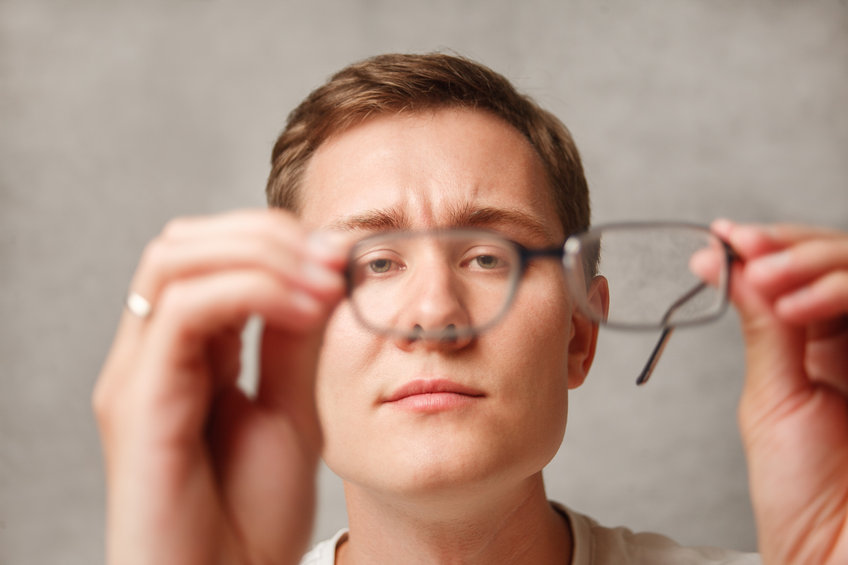When it comes to eyeglasses and lens design, the options and treatments can be overwhelming. From bifocals to trifocals to progressives, it is hard to know where to start and which is best for you. However, understanding how each lens works can make the process much simpler. Here we will be focusing on comparing bifocals to progressive or “no lines”, and clarifying the main pros and cons of each to help you make a more informed decision.
The idea for bifocals is said originate from Benjamin Franklin in 1784. As he aged, he found it difficult to see objects up close, a condition we now refer to as presbyopia. By combining his distance and reading glasses into one lens, a so called “double spectacle”, he was able to continue on with his work without needing to regularly switch his glasses! Bifocals work by helping your eyes do what they used to do naturally, focus on up close objects, while allowing clear distance vision through the top of the lenses. Bifocals were a main stay for nearly 200 years, until the introduction of progressive lenses.
Also see our blog about Cataracts or other age-related eye issues.
Progressive lenses, commonly referred to as “no line bifocals” are actually a no line trifocal. Progressives are designed with three different viewing areas, distance, intermediate, and near. The distance and near function similar to a bifocal, the intermediate however, is what sets them apart. Historically, a simple setup like bifocals met the needs of people’s visual demands. However, as we shifted our near work from paperwork to computers, the distance at which we worked changed. Now our reading material was on a desk and set back further from us than standard paper. This “computer distance” is too close for the distance portion of a bifocal, and too far away for the reading portion. Lined trifocals do solve this problem and are still manufactured; however, the multiple lines are often found to be cumbersome and distracting. This is where progressive lenses shine. They allow a smooth transition between distance, computer, and reading.
The optics of bifocals and progressives are very different. A bifocal has a large viewing portion on top, and a reading segment below. The large viewing areas allow optimal use of the lens in those two specific areas. Progressive lenses offer an hourglass like shape of usable vision, with distance and reading as the widest portions, and the intermediate with slightly less viewing area. Having these three viewing areas, and without a line, offers the most “natural” lens, but as three different sets of optics are being fit into one lens, the viewing area of each is less.
This begs the question, which is best for me? Well, this depends on how you use your eyes. Are you spending most of your time watching tv and reading? Or are you also using a computer regularly, or have another hobby or work-related task that involves using your vision at arm’s reach? These types of questions are key to selecting the right lens. For people whose vision needs are strictly distance and near, without common use of their intermediate region, I recommend a bifocal. This will allow for the largest viewing area in each part of the lens. Bifocals are also easier to get use to, and often less expensive. For a person with dynamic visual needs including reading as well as frequent computer use, a progressive would be the best fit. Although there is some sacrifice in the amount of lens dedicated to each task, having all three will allow the wearer a more natural and efficient viewing experience.
Of course, there are more lens options and styles to consider, but these general guidelines should serve as a good starting point into deciding on the right type of multifocal lens for you. If you have more questions or would like more information, ask your optometrist, or see the links below.
Save up to 80% on the cost of your prescriptions at your local pharmacy with EasyDrugCard.com. Download your free drug card and begin saving today.












